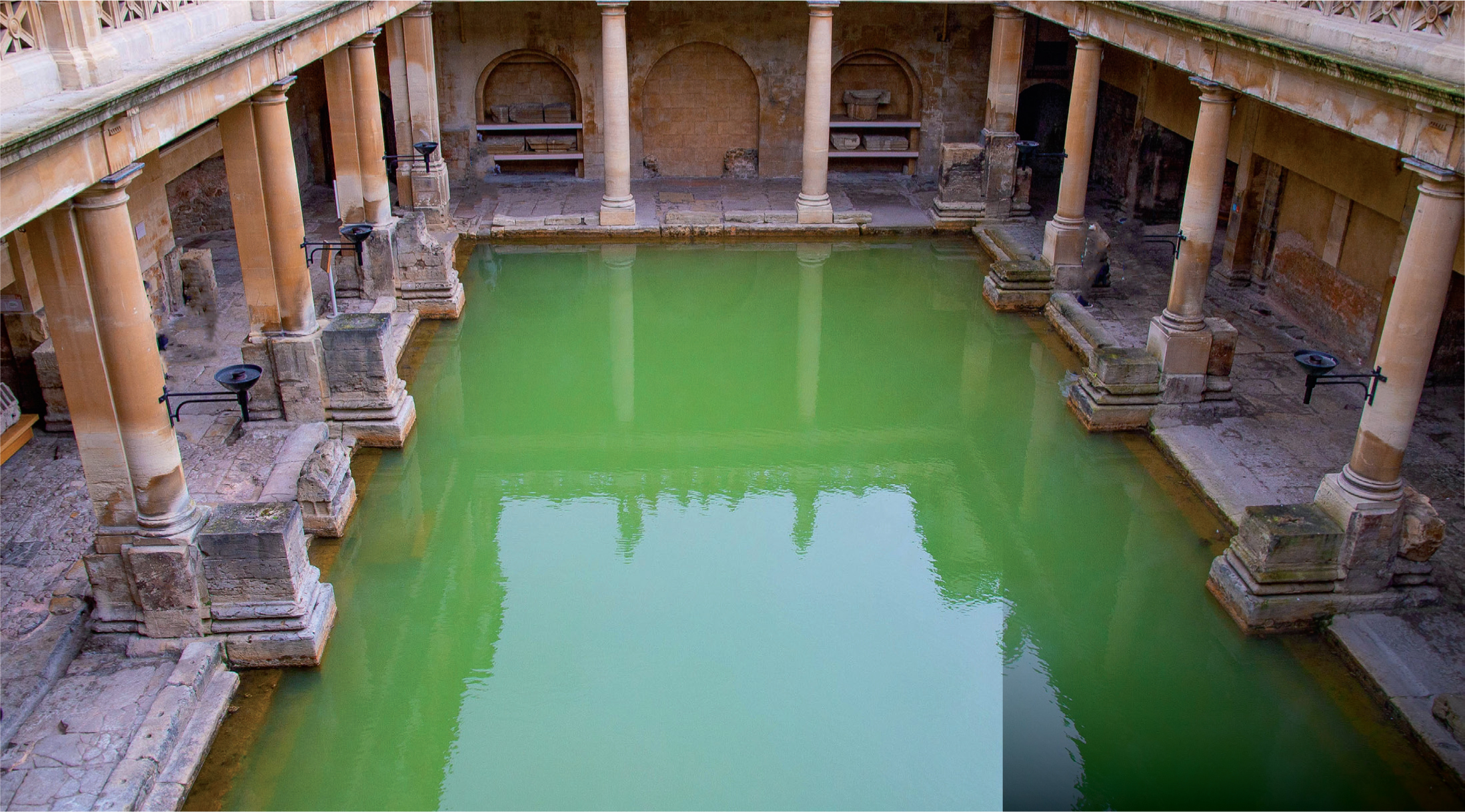Child medical tourism is ‘the bi-directional movement of children to and from a country to seek advice, diagnosis and treatments’ (Hamlyn-Williams et al, 2015).
Although it is not known how many children are involved in medical tourism (Hamlyn-Williams et al, 2015), adult medical tourism is a multi-billion-pound industry, with an estimated five million people travelling across international borders each year for medical treatment (Hanefeld, 2014). However, seeking health treatment abroad is not a new phenomenon – the ill, infirm and injured have travelled considerable distances in search of a cure for their ailments since ancient times.
Historical background
Studies of ancient cultures depict a strong link between religion and healthcare dating back thousands of years, with people travelling long distances to visit renowned healers and therapeutic sites. The Sumerians (4000 BC) built the earliest known health complexes around hot springs, with majestic temples and flowing pools (Health Tourism, 2024).
The benefits of drinking water from iron-rich mineral springs were discovered by ancient hill tribes during the Bronze Age, living in Switzerland in what is now St Moritz. Bronze drinking cups have also been found in thermal springs in France and Germany, possibly reflecting health pilgrimages (Health Tourism, 2024).
The Ancient Greeks built temples in honour of Asclepius, the Greek God of Medicine and pilgrims flocked to these temples in search of physical and spiritual healing. The most famous healing temple was the Sanctuary of Asclepius at Epidaurus which had a gymnasium, a snake farm, a dream temple and thermal baths (UNESCO, 2024).
Ayurvedic medicine was practised in ancient India, the term being derived from the Sanskrit words ayur (life) and veda (science or knowledge). Ayurveda treatments aim to regain a balance between the body, mind, spirit, and the environment by lifestyle interventions and natural therapies, and involve diet, herbal remedies, massage therapy, yoga, and meditation (John Hopkins Medicine).
In Japan, hot mineral springs, known as onsen baths, were considered healing pools for skin problems, fatigue and muscle aches and pains. When Buddhism was introduced into Japan in the 6th century, temples taught that bathing could ward off disease and bring good fortune. Towns developed around these hot springs with many travelling warriors, such as Samurai, visiting to rest, heal and alleviate battle wounds. Onsen baths are still a tourist destination today, a recent study reporting a link between bathing and reduced prevalence of hypertension (Yamasaki et al, 2022).
Many early Islamic cultures established health care systems. In 1248 AD, the Al-Mansuri Hospital was founded in Cairo by Al-Mansur Qalawun. His vision was to provide free treatment for all, regardless of race or religion. Upon discharge from hospital, patients were provided with both food and money as compensation for wages lost while in hospital. The hospital had capacity for 8 000 patients, making it the largest medical complex in the world and becoming a magnet for foreigners seeking healthcare (Green, 2013).
Medical tourism flourished during the Renaissance Period (14th–17th centuries), particularly in Europe (Simpson, 2017). The Belgian town of Spa had been popular for its natural mineral baths since Roman times, with Pliny the Elder writing, ‘This water purges the body, cures fevers and dispels calculous affections’. The term spa has become eponymous for any natural springs whose waters are purported to have healing benefits.
During the 16th century, the elite of Europe rediscovered many Roman baths and flocked to spa towns such as Vichy, Baden-Baden and Aachen. Grand resorts were developed featuring baths, kurhaus and kursaal (buildings and rooms dedicated to therapy), pump rooms, drinking halls, colonnades and galleries, harnessing the natural mineral waters for bathing and drinking (UNESCO, 2021).
A noteworthy traveller in the history of medical tourism was Michel Eyquem de Montaigne. In 1578, he developed painful kidney stones and travelled through France, Germany, Austria, Switzerland, and Italy in search of a cure, eventually establishing himself at Bagni di Lucca, where he took the waters. He recorded regional differences and customs in his journal, which is believed to be the earliest documented spa guide in medical tourism history (Health Tourism, 2024).
In England, Dr. William Turner wrote ‘The Book of the Natures and Properties of the Baths of England’. He listed over 60 disorders which could benefit from bathing in spas including miscarriage, piles, migraine, sciatica, worms in the belly, forgetfulness, dullness of smelling, palsy, cramp in the neck and failure of menstruation. Turner believed diseases were caused by an imbalance of the four humours: phlegm, blood, yellow bile and black bile, with an excess of phlegm being cured by heating and drying the patient's body with hot mineralised water (Rolls, 2024).

Bath or Aquae Sulis became known for the healing properties of its waters, and was a prominent resort for medical tourists (see photo above). The legendary founding of Bath is ascribed to Prince Bladud who was cast from the royal court when he contracted leprosy. He was banished to the west country, where he was employed as a swine herd and while tending pigs he noticed that those who wallowed in the hot muddy pools did not have sores on their skin like the others.
He bathed in the waters himself which apparently cured his leprosy, and he was subsequently restored to his position of heir, founding the city of Bath so others could benefit as he had done. In the 1720s, Bath became the first city in England to have a comprehensive covered sewage system, paved roads, street lights and smart hotels and restaurants, all of which were attractive to medical tourists. By the mid-18th century, physicians realised that spa treatment was ineffective for many of the conditions on Turner's list but did appear beneficial for other disorders including some types of paralysis, muscular pains, gout, rickets and various skin diseases (Rolls, 2024).
In the 18th and 19th centuries, tuberculosis (TB) was one of the leading causes of death. The Industrial Revolution, along with poverty and squalor, created the perfect environment for the propagation of the disease. Dr. Hermann Brehmer, who was diagnosed with TB in 1853, went to the Himalayas to seek a cure in the mountain climate, subsequently returning to Germany in 1854 to study medicine.
He wrote a dissertation ‘Tuberculosis is a Curable Disease’ and established a sanatorium, for the treatment of TB at Görbersdorf in Silesia (modern-day Poland). Brehmer advocated high altitude, a plentiful diet with some alcohol, and exercise in the open air under strict medical supervision (Warren, 2006). The results were regarded as highly successful, and although there is little evidence that breathing mountain air had any effect on TB, health tourists probably experienced improvements in their health due to changes in lifestyle along with regular exposure to sunlight. Regardless of the efficacy of mountain air, encouraging those infected with TB to move to isolated areas removed them from the general population, thereby decreasing the risk to others.
Dr. Brehmer was the acknowledged originator of the sanatorium movement (Murray et al, 2015), and sanatoria grew in popularity catering for patients with various illnesses, not just TB. Sanatoria also treated children and many were sent to clinics at high altitudes, often for months on end to convalesce, the term coming from the Latin convalescere ‘to grow fully strong.’ In 1907, Stannington Sanatorium, established by The Poor Children's Holiday Association, opened in the north east of England and was the first sanatorium in the United Kingdom to treat children (Woodhorn, no date).
In the 20th century, Europe and the USA were important destinations for medical tourism. In 1933, the American Board of Medical Specialties (ABMS) was established developing educational and professional medical policies, with the European Union of Medical Specialties (UEMS) being established in 1958 (Health Tourism, 2024). Yoga and Ayurvedic medicine saw a revival in India during the 1960s where a New Age Movement gained popularity, becoming an alternative medical tourist destination for Britain and America's elite. Cuba developed programmes for eye, heart and cosmetic surgical procedures during the 1980s and 1990s when healthcare became increasingly expensive in America.
Following the 1997 economic crisis in Asia, many Asian governments sought alternative ways to boost their economy. Thailand became popular for plastic surgery, including sex-change operations, due to competitive pricing, with private hospitals arranging interpreters, concierge services, embassy assistance, VIP airport transfers, airline tickets and international insurance coordination (Pickert, 2008).

‘While healthcare globalisation for children may widen treatment options, it also raises medical, ethical, economic, regulatory and legal issues and it is important for families to be aware of these’
Implications for children
Today, medical tourism continues to be a growing phenomenon, with travellers seeking a wide range of procedures including cosmetic surgery, fertility treatment, dentistry, bariatric surgery, cardiology and orthopaedic surgery. Common destinations include Thailand, Mexico, Turkey, Singapore, India, Malaysia, Canada, Cuba, Brazil, Argentina, and Costa Rica (Lee et al, 2013). Within the United Kingdom, medical tourism is a source of income for the NHS, and it is predicted that the market will continue to grow steadily (Boseley, 2013; Future Market Insights, 2024).
While healthcare globalisation for children may widen treatment options, it also raises medical, ethical, economic, regulatory and legal issues and it is important for families to be aware of these (Birchley et al, 2021). Parents from low resource countries may access healthcare for their children in other countries, through private funding or humanitarian organisations, and those from wealthy countries, may travel abroad with their child for a wide variety of reasons. Those from the UK may travel seeking innovative treatments involving new technologies; they may travel to enrol in clinical trials; they may pursue established treatments which are not available in the UK; they may want therapies which are not evidence-based or of unproven effectiveness; they may be concerned about long waiting lists; or they may be interested in treatments which are illegal in the UK (Birchley et al, 2021).
Many families taking children abroad are not unhappy with their current treatment but are seeking a cure or a second opinion from a ‘world expert’ (Gray, 2017; Bhatia and Birchley, 2020). They may seek cardiac care, stem cell therapy, proton therapy, stem cell therapy or complex surgical interventions.
It is important that decisions about treatment are based on the best interests of the child and these are generally arrived at through a process of shared decision-making between clinicians and the child's parents or caregivers (The Children Act 1989). Clinicians have a legal duty of care towards their patients and when discussing treatment abroad they may need to satisfy themselves of the reputability of other care providers. The quality of care and safety of medical procedures in different countries may vary significantly, and there may be unclear boundaries of medical responsibility. Adverse events may occur abroad, which raises medico-legal and insurance issues, as well as concerns regarding the follow-up of patients (Leggat, 2015). Ensuring that local healthcare providers can take over a child's care, when they return home, is essential as inadequate follow-up may lead to complications and poor outcomes.
Ensuring informed consent while abroad may be challenging with language barriers and cultural differences making the process more difficult. It is important that families understand the risks, benefits and alternatives to any treatments that they are considering. Whilst providing cultural care to families is of utmost importance (Hamzehpour et al, 2023), in some countries children's rights will not be protected and their views will be regarded as synonymous with their parents.
This may be problematic when parents are seeking treatment that is unnecessary, suboptimal, or harmful to the child, for example, female genital cutting (Leggat, 2015; Bhatia and Birchley, 2020). If a clinician is aware that a child is at risk of or has been taken out of the country for female genital mutilation, this must be reported to the police (Female Genital Mutilation Act 2003).
The internet allows parents to find information about global trials and treatments, and some parents have set up crowdfunding websites relying on public sympathy to raise funds (Birchley et al, 2021). Although crowdfunding is not unethical, there may be unforeseen consequences that may influence conceptions of healthcare and how it is delivered, and there have been concerns about the creation of fraudulent websites (Bhatia and Birchley, 2020, 26).
Parents and healthcare professionals may disagree about which treatment, if any, is in the best interests of a critically ill child, the most contentious disagreements often occurring when limits to life-sustaining treatment are being discussed (Bhatia and Birchley, 2020). Parents may request the continuation of life-sustaining medical treatment abroad against their paediatrician's advice and if an impasse is reached, court intervention may be required to determine what is in the best interests of the child (Bhatia and Birchley, 2020). Some cases have resulted in high profile media coverage, for example, once paediatricians had decided that treatment for Charlie Gard, who had encephalomyopathic mitochondrial DNA depletion syndrome, was no longer in his best interests, his parents explored travelling outside the UK for experimental therapy (Caplan et al, 2017).
‘Medical tourism is growing and may become even more common with the emergence of therapies for rare diseases that are expensive and limited in availability. While travelling abroad may offer potential benefits, it may also present significant challenges’
Institutions require policies and procedures about how to manage situations where travelling abroad may put a child at risk of significant harm, a key ethical consideration being whether the proposed course of action exposes the child to risks of harm that are disproportionate to the benefits. These high-profile and contentious cases can result in significant public reaction and clinicians may find themselves at the forefront of a negative media response, and on occasions abuse, when trying to undertake their professional practice. It is important that clinicians have access to supervision and support at these times to maintain professional standards and promote wellbeing (Butterworth, 2022).
Medical tourism is not just an issue for ‘medics’. Nurses and other allied health professionals may provide care for medical tourists or follow-up care for those who have had treatment abroad (Eisser et al, 2013). They should reflect on how they would respond to children and families who ask their opinion about seeking treatment abroad. They should consider whether decisions are ethical and lawful, and ensure they have colleagues to discuss their thoughts with. They should try to ensure that families are being supported and that they have all the information they need to make informed decisions. Additionally, they may wish to give consideration to other children in the family and help support the parents in meeting their needs (Rainbow Trust Children's Charity, 2024).
Conclusions
Seeking medical treatment abroad is not new, having been recognised since ancient times and documented throughout history. Medical tourism is growing and may become even more common with the emergence of therapies for rare diseases that are expensive and limited in availability. While travelling abroad may offer potential benefits, it may also present significant challenges. Health professionals should engage with parents and support them to make informed decisions before travelling abroad, ensuring that all decisions are in the best interests of their child.


